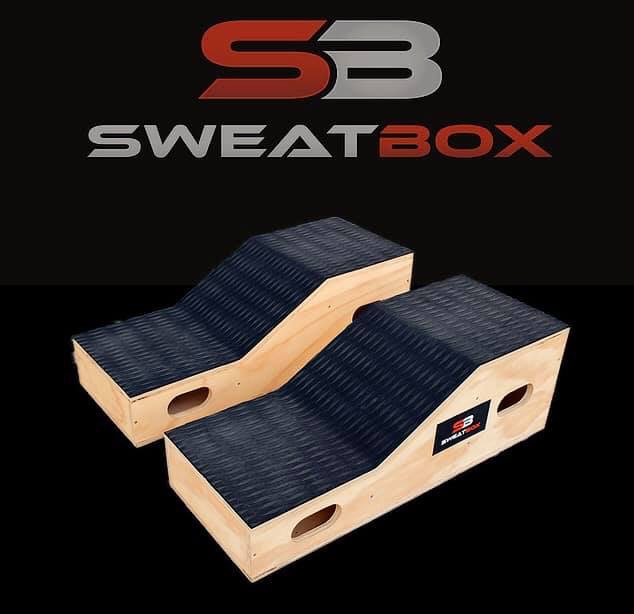4 Anti Aging Tips to add to Your Exercise Routine

Who here wants to get old? I am pretty sure no one raised their hands on that question. The simple fact, though, is we do age.
As we age, deleterious effects occur in and out of our bodies. The great news is we can regulate these effects with exercise. The aging process can increase one’s chance of falls, higher incidence of injury, and illness. Yet, proper preparation can mitigate the increases in morbidity and reduce the fear of aging.
Prepping your body for the future is the key to independence through our advancing years. What do you need to add to your workouts today?
Understanding these 4 concepts will help you get the hop back in your step.
1. Muscle Up
Is it bulking season? That is not the concept we are trying to get across here. However, muscle is important in functionality. Notably, lean body mass or muscle affects ambulation, mobility, energy intake, overall nutrient intake, independence and breathing. Age can take a toll on our muscles. Whether we call it Sarcopenia, muscle wasting, or a decrement in muscle cell volume, the effects are the same. What is Sarcopenia? And, what can we do about it?

Sarcopenia is the loss of muscle tissue as a natural part of the aging process. These age related losses can start around 40 years of age. One can see a decrease in strength of 2-5% per year and up to 40% shrinkage in muscle fibers by the eighth or ninth decade. This is in part due to physical inactivity.
Say that again. Yes! You heard right; physical inactivity can result in age related losses.
Let’s throw on those workout clothes and go prime our muscles. This does not have to be complicated. Using the K.I.S.S principle (Keep it simple silly), we can strive to meet the national guidelines for exercise. That is 2 days! Can you commit to 2 days of strength training?
You have now committed to 2 days of strength training. Now what? Let’s stay with the concept of simplicity. For each day, complete 8-10 exercises that target all major muscle groups. For each exercise, do 1-2 sets of 10-15 repetitions. That is pretty simple, right?
2. Power Hour

You have probably heard power and strength used interchangeably. Let’s differentiate the two. Strength is the force acted upon an object. Power is force and velocity acted on an object. A baseball player does not have to be strong to throw a 90 mph fastball, but they definitely need power.
Why is power important to us? As mentioned earlier, Sarcopenia progresses as we age. This affects our fast twitch muscle fiber the most. These are the power producing muscle fibers. The loss of power affects functionality across all of our activities of daily living. Power is essential in reduction of fall rates as we age.
Remember, power is not about a maximal load. When you start with power exercises, concentrate on a rapid concentric phase and slow eccentric phase while always maintaining control. To power up your workout, just start with 1-2 sets of 5 reps with a load that is around 20% of your 1 repetition maximum.
3. Please pass the oxygen
Cardio, Cardio, Cardio!!! Without a healthy heart, what do you have? The simple answer is heart ache and heart break. Your heart should be the biggest motivating factor because it pumps oxygen carrying blood to our systems. Yet, there is more!

Your heart, lungs, blood vessels, and muscles are working in harmony. When something is off or not conditioned, our VO2 or maximal oxygen uptake may lessen. Your VO2 is a good indicator of your cardio respiratory fitness. Ew, 4 hours on a treadmill! That is not needed to acquire a higher cardio respiratory fitness level. How do you achieve higher cardio fitness? And, why do I need to before I age?
The first step is to make a plan. That plan should be based on the national guidelines of exercise. These state, one should achieve 150 minutes of moderate intensity or 75 minutes of vigorous intensity aerobic exercise. You should include a mixture of low, medium, and high intensity days of training. You can base your intensity from heart rate. A good range is 60-80% of your maximal heart rate. Let’s look how we can plan out our cardio week.

Why all the fuss about doing cardio? It comes down to one word, RESILIENCE! Individuals bounce back quicker from illness and injury when they have average and above average VO2 max for their age. Whereas, individuals may not recover fully or not at all if they are on or below the red line.
4. Retain Optimal Mobility R.O.M

Flexibility is not being able to stick your toe in your mouth. Who would want to do that anyway? It is the Range of Motion (R.O.M) around a joint/s. Sadly, as we age, our R.O.M does decrease. Moreover, the impairment in our Range of Motion affects our Mobility and thus our Quality of Life (QOL).
What causes the decrement of Flexibility? There are certain conditions such as arthritis and Osteoporosis that can hamper our joint mobility. Yet, a major player is DISUSE!!! Are you still sitting there?
Getting started can be easy. Sign up for that yoga or stretch class your friend keeps begging you to accompany him/ her. Another option is find 3-4 stretches preferably ones that target multiple muscle groups and find a time in the day to complete them. You can eventually add more but let’s take small steps to ensure we build them into habits first. Now, you have your stretches. Plan to do 2 sets at 30 seconds per stretch. For your best results, do this 2-5 per week.


